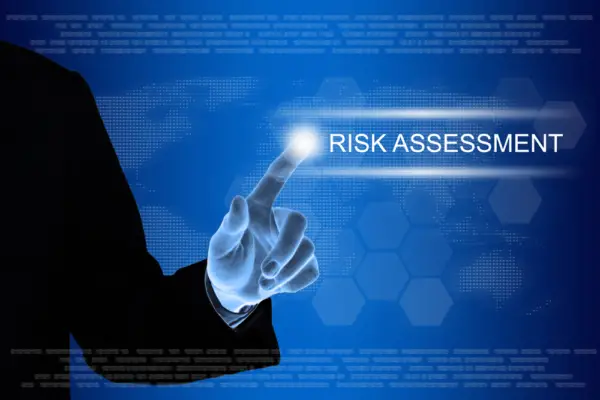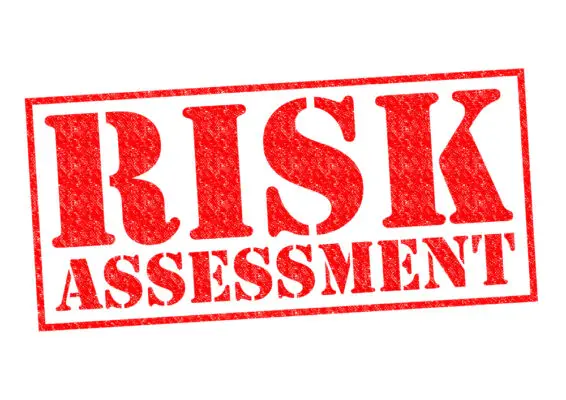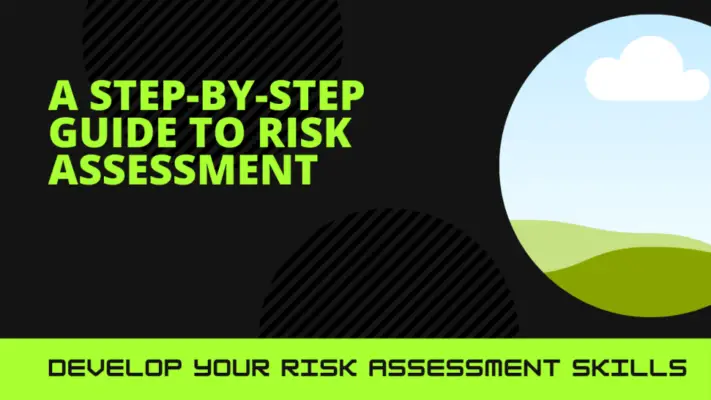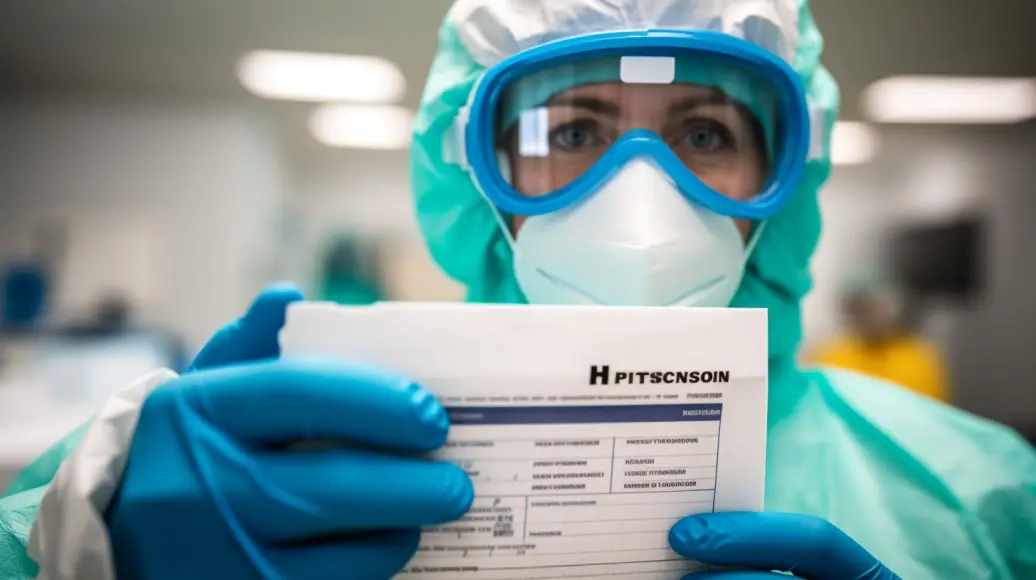Infection risk assessment is a critical component of healthcare settings, as it plays a crucial role in preventing the spread of infections and ensuring patient safety.
This systematic process involves identifying potential sources of infection, evaluating the likelihood of transmission, and implementing appropriate preventive measures.
The key components of an infection risk assessment include:
- Thorough identification and analysis of potential hazards.
- Determination of vulnerable populations.
- Evaluation of existing control measures.
- Development of strategies to mitigate risks effectively.
Healthcare facilities can minimize the occurrence and transmission of infections by conducting regular infection risk assessments. This helps identify areas that require improvement or intervention.
Conducting infection risk assessments offers numerous benefits. It helps healthcare professionals promptly identify emerging infectious diseases or new pathogens, allowing for early implementation of preventive measures.
Additionally, it enables organizations to allocate resources efficiently by prioritizing high-risk areas for interventions.
However, infection risk assessments can present challenges such as limited resources, time constraints, and complex data interpretation. To overcome these hurdles effectively, adherence to best practices is essential.
These include engaging multidisciplinary teams in the assessment process, utilizing standardized tools and protocols, maintaining accurate documentation, and regularly updating knowledge on emerging infectious agents.
Performing infection risk assessments is an absolute must in healthcare environments. It is imperative to prevent infections and guarantee the safety and well-being of patients.
Implementing this comprehensive process allows facilities to proactively address potential risks while providing safe environments for patients and healthcare workers.

Importance of Infection Risk Assessment in Healthcare Settings
In healthcare settings, the importance of infection risk assessment lies in its role as a critical tool for identifying potential sources of infection, evaluating the likelihood of transmission, and implementing effective prevention and control measures to safeguard patient safety.
Infection control measures are essential in reducing the spread of infections within healthcare facilities. By conducting thorough risk assessments, healthcare workers can identify high-risk areas or practices that may contribute to transmitting pathogens.
This allows them to develop targeted interventions and implement appropriate infection prevention strategies.
Additionally, infection risk assessment helps healthcare workers understand the factors contributing to increased susceptibility to infections among certain patient populations.
This knowledge enables them to tailor their approaches and interventions, ensuring optimal patient outcomes.
Thus, infection risk assessment is vital in minimizing disease transmission and promoting patient safety within healthcare settings.
Key Components of an Infection Risk Assessment
It is crucial to consider and analyze the essential elements of an infection risk assessment to evaluate the potential dangers associated with a given situation comprehensively.
This includes using specific risk assessment tools and implementing effective risk management strategies.
Risk assessment tools are instrumental in identifying and quantifying potential risks within a healthcare setting. These tools may involve collecting and analysing data related to patient demographics, medical history, and exposure risks.
Healthcare professionals can assess the probability and seriousness of infections in their facility more precisely using these tools.
In addition to utilizing risk assessment tools, implementing robust risk management strategies is vital in minimizing infection risks.
This involves developing comprehensive infection prevention and control protocols, such as hand hygiene practices, proper disinfection methods, and personal protective equipment usage.
Regularly evaluating these strategies ensures their effectiveness in mitigating infection risks.
To stay safe from infection, use the right tools and management strategies.
This approach enables healthcare settings to proactively identify potential dangers and implement necessary measures to protect patients and staff from infections.
Benefits of Conducting Infection Risk Assessments
The evaluation and analysis of potential dangers associated with a given situation, through carefully considering key components, allows healthcare professionals to proactively identify and address potential risks, thereby enhancing patient safety and minimizing adverse events.
Conducting infection risk assessments offers several benefits:
- Improved cost-effectiveness: By identifying potential risks early on, healthcare facilities can implement targeted prevention strategies that help reduce the financial burden associated with treating infections.
- Enhanced patient outcomes: Through risk assessments, healthcare professionals can identify areas for improvement in infection control practices, leading to better patient outcomes and reduced morbidity and mortality rates.
- Increased awareness: Assessments increase healthcare providers’ awareness of the importance of infection prevention strategies, ensuring that all staff members are educated and equipped to prevent infections effectively.
Healthcare facilities can improve patient safety, optimize resources, and enhance the quality of care by conducting regular infection risk assessments.
It also enables them to implement preventive measures to contain the spread of infections.
Common Challenges in Performing Infection Risk Assessments
One common obstacle faced when conducting evaluations and analyses of potential dangers associated with a given situation is the need for healthcare professionals to navigate various complexities and intricacies. When it comes to infection risk assessments, this challenge becomes particularly evident.
Infection control is a critical aspect of healthcare settings, and identifying risk factors that could lead to infections is crucial for ensuring patient safety. However, infection risk assessments can be difficult due to the multifaceted nature of healthcare environments.
Numerous variables must be considered, such as patient demographics, medical conditions, procedures performed, and environmental factors.
Additionally, accurately quantifying the probability and severity of infection risks can be challenging due to limited data availability or lack of standardized methodologies.
Despite these challenges, healthcare professionals strive to overcome them to mitigate infection risks and protect patients’ well-being effectively.

Best Practices for Effective Infection Risk Assessments
An essential step in ensuring patient safety and preventing the spread of infections is implementing effective strategies for evaluating potential dangers associated with a given healthcare setting.
Infection risk assessments play a crucial role in identifying areas of vulnerability and implementing appropriate measures to mitigate those risks.
Several best practices should be followed to conduct an effective infection risk assessment.
Firstly, it is important to gather accurate and comprehensive data about the healthcare facility, including its layout, patient population, and existing infection control protocols.
This information is a foundation for identifying potential infection sources and determining the transmission likelihood.
Secondly, engaging a multidisciplinary team comprising experts from various fields, such as epidemiology, infectious diseases, environmental health, and nursing, can ensure a comprehensive evaluation.
Each team member brings unique perspectives that contribute to a thorough analysis of all potential risks.
Lastly, regular review and updating of infection risk assessments are necessary to account for changes in the healthcare environment or emerging infectious threats.
Healthcare facilities can effectively mitigate infection risks by incorporating best practices into their risk assessments.
Targeted interventions can be implemented for successful risk mitigation by identifying areas that require attention.
Frequently Asked Questions
Are there any legal requirements or regulations for conducting infection risk assessments in healthcare settings?
Legal requirements and regulations exist for conducting infection risk assessments in healthcare settings.
These rules ensure that healthcare facilities adhere to specific standards and protocols to mitigate the spread of infections and protect patient safety.
How often should infection risk assessments be conducted in healthcare settings?
In healthcare settings, infection risk assessments should be conducted regularly and frequently due to their importance in identifying potential sources of infections and implementing appropriate preventive measures.
What are the potential consequences of not conducting regular infection risk assessments?
The potential consequences of not conducting regular infection risk assessments in healthcare settings include increased transmission of infections, compromised patient safety, higher healthcare costs, and legal liabilities.
Regular assessments are crucial to identify and mitigate risks effectively.
How can healthcare organizations ensure that their infection risk assessments are comprehensive and accurate?
Ensuring compliance and implementing best practices is crucial for healthcare organizations to ensure their infection risk assessments are comprehensive and accurate.
This involves meticulous attention to detail, staying informed about current guidelines, and regularly updating assessment protocols.
Are any specific tools or software available to assist with infection risk assessments in healthcare settings?
Various tools and software are available to assist in conducting infection risk assessments in healthcare settings.
These resources help identify potential risks, track data, analyze trends, and generate reports for comprehensive and accurate assessments.

Conclusion
Infection risk assessment is an absolutely crucial component of healthcare settings. Without it, potential risks may go unidentified and appropriate preventive measures may not be implemented.
This can have disastrous consequences and lead to the widespread spread of infections in healthcare facilities. Therefore, it is imperative that infection risk assessment be taken seriously and acted upon promptly to minimize the spread of infections effectively.
The key components of an infection risk assessment include:
- Identifying potential sources of infection.
- Evaluating transmission routes.
- Assessing the Susceptibility of Individuals
- Determining control measures.
Regular assessments provide numerous benefits, such as improved patient safety, reduced healthcare-associated infections, and enhanced compliance with infection prevention guidelines.
Despite challenges faced during the process, adhering to best practices ensures effective infection risk assessments are carried out successfully.

Chris Ekai is a Risk Management expert with over 10 years of experience in the field. He has a Master’s(MSc) degree in Risk Management from University of Portsmouth and is a CPA and Finance professional. He currently works as a Content Manager at Risk Publishing, writing about Enterprise Risk Management, Business Continuity Management and Project Management.

